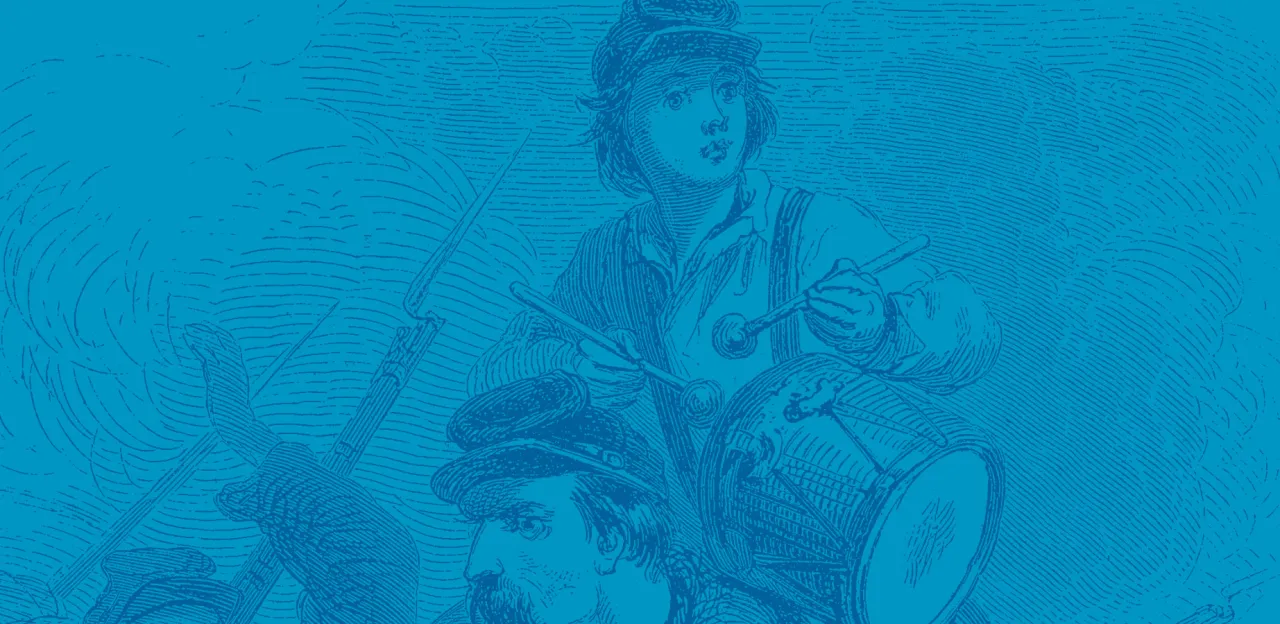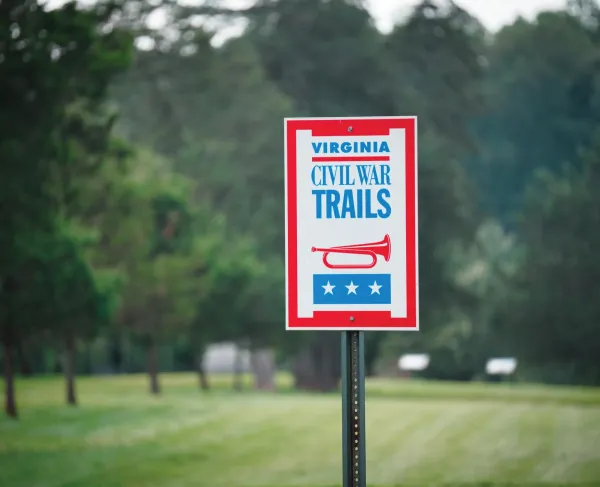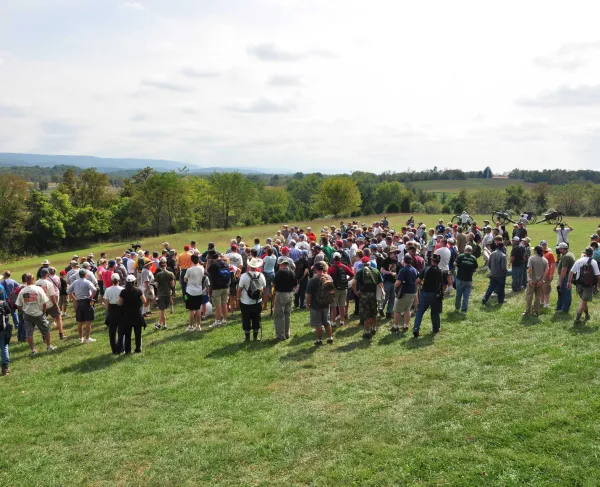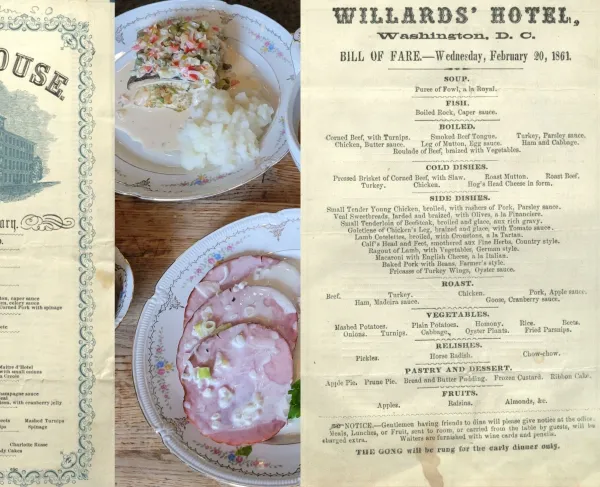Hannah Oberlander

Hannah Oberlander is a 4th grade teacher at Lowes Island Elementary in Virginia. Her students wrote, acted, and produced a series of videos on major Civil War events, which they then submitted to the Civil War Trust. You can see the videos here.
In addition to Hannah’s responses, we also interviewed her student, Molly, who helped Hannah come up with the lesson plan idea.
Q: How did you come up with the idea for the videos?
Hannah: I came up with the idea for this lesson when one of my students, Molly, asked to help me plan a history lesson for the rest of our class. Molly had researched and discovered your website, and so we decided to have the class participate in making short, creative, and informative videos that we would then send to the Civil War Trust.
Molly and I put together “research packets” for each of the five Civil War events we wanted the groups to learn and make videos about. The research packets included articles from the Civil War Trust website along with a visual primary source that connected to their event.
Molly: I wanted to do something fun with the class and in the Civil War unit we watched a lot of cool videos on the Civil War so, I thought we could create our own videos!
Q: How involved were your students in creating the videos?
Hannah: The students worked together in groups to formulate questions about what they wanted to include in their video presentations. I had a basic graphic organizer that kept their questions and findings organized but also allowed a lot of student generated inquiry of their own. The only question they had to answer was why this event was important to the Civil War.
I allowed the students to use laptops and iPads from our library as well as the printed articles from the Civil War Trust website to aid my students in discovering answers to their questions.
I protected sacred class time for them to work on their projects and had them assign each other different jobs to take care of at home for “homework” that included bringing in pieces to costumes, writing parts of the script, making a fake “microphone,” etc. I was amazed at how the students themselves felt compelled to take ownership and responsibility of their film productions. To them, these projects were very real, and I think that was a huge motivator for them to do their best on these projects.
Molly: On the first day of the research they dug right into the pieces of information we gave the students and they started getting ideas really quickly. Later on in the project, when we created costumes, the students were totally into it! The costumes were terrific and were detailed. Some students even made beards! Finally, the groups filmed their acts and songs on iPads. When the groups filmed they really got into the script and pretended like they were Civil War soldiers and generals!
Q: What is your philosophy of teaching?
Hannah: That’s a loaded question! I believe students learn best through their own discoveries. As they wonder about the world around them, students conjure up questions that motivate them to explore possible answers and in the process gain skills of inquiry, observation, research, and critical thinking. This is not just hands-on learning; inquiry is radically more!
To do this, I have a lot of work to prepare materials for lessons, but I give up a lot of the control as far as a lesson activity is concerned. Often, I pose a guiding question and hand out a primary source to my students, enabling them the freedom to discover something about it, using their own questions as they use the materials to find answers. Even at the young age of nine, my students are hungry to learn and explore on their own, being “historians” themselves. In the process of being curious, they find out what I wanted them to learn about something and so much more! Using inquiry in the classroom definitely stretches me, because lessons are now driven by the curiosity of the students.
Q: How did you get into teaching and where has your career path led you?
Hannah: I got into teaching because I enjoy working with children and watching children’s eyes light up when they learned something new had the potential to be an extremely rewarding career. I have taught fourth grade at Lowes Island Elementary School for the past five years and am about to embark on year six. For the past three years, I have taken the Teaching American History courses available through George Mason University and am in my last year of graduate classes and will receive my Master’s degree in History Education this coming May.
Q: How did you become interested in American history and the Civil War?
Hannah: I became interested in the Civil War when I was in fourth grade and discovered that my grandfather’s grandfather had fought for the Confederacy and that I had connections to Robert E. Lee on my father’s side of the family. Having a connection to the actual people who lived during the Civil War captured my imagination, because there really weren’t “bad guys” and “good guys,” simply Americans versus Americans.
History has been my favorite subject in school for as long as I can remember. I have loved studying the intricacies of past and present people’s thoughts, choices, and legacies. It’s that love of learning that drives me to share with my students the primary sources, real-life stories, and unknown facts that bring the past to life for those who would otherwise shrug off a history textbook and the monotonous drone of memorizing facts and dates for the sake of a test grade.
Q: Besides the videos, how do you make history relevant and exciting for your students?
Hannah: I love to have my students act out historical events or conduct mock interviews of famous people to bring the history to life. Reader’s theaters and simple costumes add a lot to these activities and get the students even more enthusiastic to participate. We collect natural resources to construct model longhouses when studying Native Americans. We build Jamestown forts out of popsicle sticks and simulate a House of Burgesses meeting in our classroom. I have simulated taxing the students without giving them representation, so they knew how it felt to be a colonist on the brink of the Revolutionary War. Last year, my students put together a reenactment of the Boston Tea Party. I also put a lot of ideas to music for my students as I play guitar—we memorize the Declaration of Independence through a song as well as the Preamble to the US Constitution. Each new year and new group of students bring me waves of new ideas—so I am excited to see what this next year holds!
Q: What advice do you have for other history teachers?
Hannah: Don’t be afraid to use primary sources with your students and let them do the job of being historians! To watch my students explore an actual document, drawing, or map from the past is fascinating, because they respect the history much more than if I was standing up in front of them telling them about it. They have a sense of respect and responsibility for their learning by working alongside of me in their investigations. Use your students’ feedback as a guide for what types of projects they want to participate in—this particular class of mine loved “performing,” and so the video idea fit well with their cluster of personalities. But last year, my students themselves wanted to design simulations for our class including a reenactment of the Boston Tea Party on our playground. Enabling students to actualize their own ideas is an empowering experience for them, and their sense of ownership over a project motivates them more than any other “teaching strategy” I have employed in the past.
America is a land of freedom and opportunity and has remained this way since its founding. The original intent of the founders and the documents has held our country together for two hundred and thirty eight years. As a teacher and as an American I value what America stands for, and I believe the only way to preserve the freedoms and opportunities we have are to pass along a love of country and an appreciation for its history to the next generation, who sit wide-eyed in the desks of my classroom. I want to impart a sense of ownership and responsibility to the students I teach, and I know the more I study history, the more I treasure America’s past, what it’s become, and its future that I entrust to my students.


